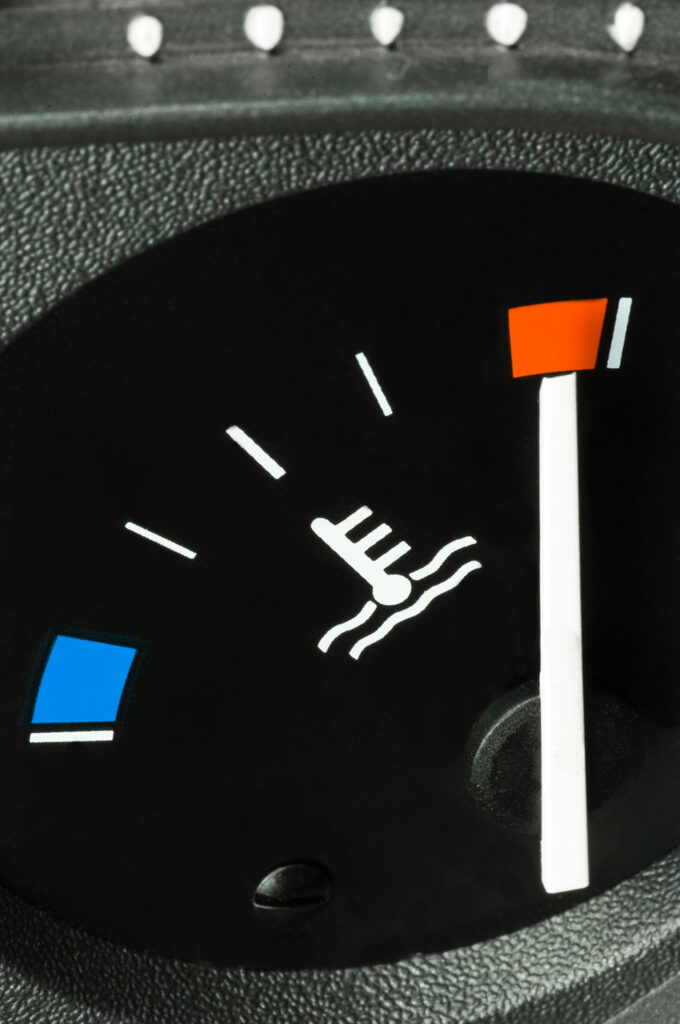Antifreeze and Cooling Systems Within Your Vehicle
The antifreeze and cooling system in a vehicle work together to regulate the engines temperature, prevents overheating, and will protect against extreme temperatures – which we need here in beautiful Colorado- both hot and cold.

For Starters, What is Antifreeze?
Antifreeze, also referred to as coolant, is a liquid added to the cooling system:
- Prevent Freezing: Keeps the liquid from freezing in cold weather.
- Prevent Overheating: Raises the boiling point to prevent overheating in hot conditions.
- Protect Against Corrosion: Contains additives to prevent rust and corrosion in the engine and cooling system.
Types of Antifreeze:
- Inorganic Additive Technology (IAT): Traditionally a green color of coolant; best suitable for older vehicle makes & models.
- Organic Acid Technology (OAT): Typically, an orange or red color; used in modern vehicles with extended life.
- Hybrid Organic Acid Technology (HOAT): Combines IAT and OAT benefits; common in European and Asian cars.
** You Should always use the antifreeze type specified in your vehicle’s manual to avoid compatibility issues.

Components of the Cooling System
- Coolant Reservoir: Stores extra coolant and accommodates expansion due to heat.
- Cooling Fans: Pulls air through the radiator to help dissipate heat.
- Hoses: Transport coolant between the engine, radiator, and other components.
- Radiator: Transfers heat from the coolant to the air.
- Thermostat: Regulates coolant flow based on engine temperature.
- Water Pump: Circulates coolant throughout the system.
How does the Cooling System Work?
- Coolant Circulation: The water pump pushes coolant through the engine block and cylinder head to absorb heat.
- Heat Transfer: Heated coolant flows to the radiator, where it releases heat into the air.
- Temperature Regulation: The thermostat opens or closes to maintain optimal engine temperature (usually around 195-220°F).
- Return Flow: Cooled fluid returns to the engine to repeat the cycle.
Cooling System Problems: What Are The Signs To Look For?
- Overheating Engine: Indicates insufficient coolant flow or heat dissipation.
- Coolant Leaks: Visible puddles under the vehicle (often green, yellow, or pink).
- Low Coolant Level: Can lead to overheating and engine damage.
- Steam from Hood: A sign of overheating or a failing radiator.
- Sweet Smell: Often indicates a coolant leak (smells sweet).
Common Cooling System Issues
- Thermostat Failure: Causes improper regulation of coolant flow.
- Radiator Clogs: Debris or corrosion restricts coolant flow.
- Water Pump Failure: Results in reduced coolant circulation.
- Coolant Contamination: Oil or debris in coolant reduces efficiency and can cause engine damage.
Benefits of Proper Cooling System Maintenance
- Prevents engine overheating and potential engine damage.
- Protects against freezing in extreme cold.
- Improves fuel efficiency and performance.
- Extends the life of cooling system components.
By staying on top of cooling system maintenance, you ensure your vehicle runs smoothly in all weather conditions.
